“The Spitzmaus Mummy and Other Treasures,” a Project by Wes Anderson and Juman Malouf, Opens at Fondazione Prada
The visionary, delightfully off-kilter lens through which Wes Anderson sees the world has been put to extraordinary use in the exhibition “The Spitzmaus Mummy and Other Treasures,” which has just opened at Milan’s Fondazione Prada. Curated together with his wife, the illustrator, designer, and writer Juman Malouf, it’s a creative tour de force. The couple took a deep dive into the extensive archives and storage facilities of two of the most important museums in the world, Vienna’s Kunsthistorisches Museum and Naturhistorisches Museum. To get an idea of the magnitude of the operation, consider the numbers: The exhibition’s 537 objects were selected from 12 collections in the Kunsthistorisches Museum, which displays more than four million artworks collected by the Hapsburg family since the 13th and 14th centuries, and from 11 of the Naturihistorisches Museum’s departments, rich in more than 20 million natural specimens. A rather titanic undertaking for Anderson and Malouf. Yet despite the fact that the project took years to complete (just imagine the bureaucracy), they were able to achieve a feel of lightness. The exhibition is fabulously entertaining.
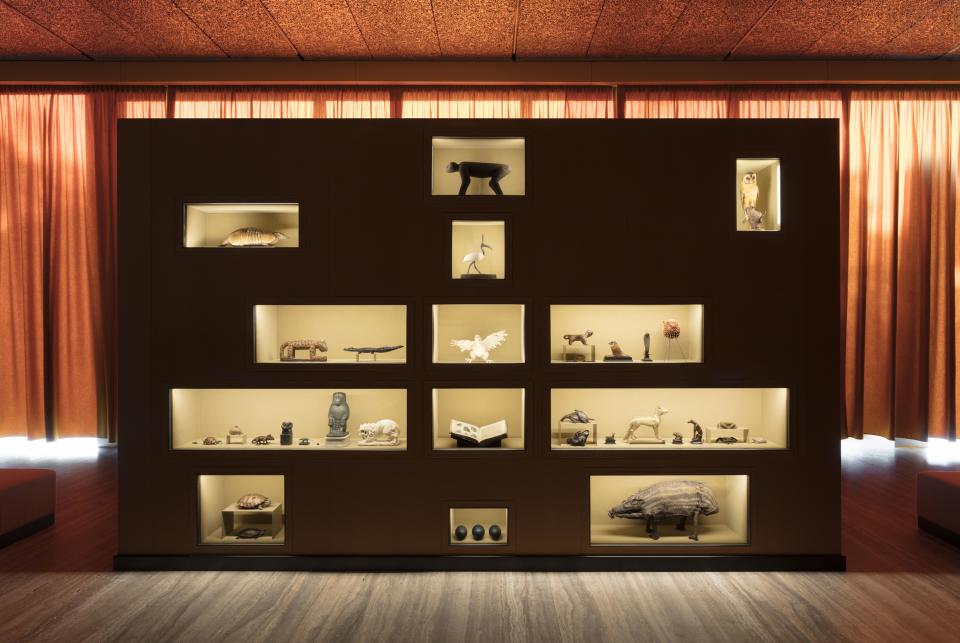
The project was first presented in Vienna in 2018, hosted in one of the Kunstinstorisches Museum’s majestic rooms. “Here at the Fondazione we almost doubled its size, including a wider selection of artworks,” explained Fondazione Prada curator Mario Mainetti, who, together with Kunsthistorisches’s curator Jasper Sharp, worked closely with Anderson and Malouf. “They were both already familiar with the Kunsthistorisches Musuem, Vienna being a favorite destination,” said Mainetti. Conceived like a modern Wunderkammer by the two artist-curators with architect Itai Margula, the Fondazione’s display replicates the original layout from Vienna, which has been transported as a ready-made to the Milanese venue. It reads as a rigorous maze of dimly lit vitrines encasing art pieces, archeological finds, and rare natural wonders. It has the flair of an elegant Jardin à l’Italienne, inspired by the one surrounding the Hapsburgs’s Ambras Castle near Innsbruck, the palace where the collections of Archduke Ferdinand II and his wife Philippine Welser were first assembled in the 16th century. A true patron of the arts, the Archduke envisioned the famous Kunstkammer as a shrine to display unique objects, exotica, and natural wonders—artifacts, fruits, plants, and animals from faraway places; rock crystals, corals, and precious stones; and automats, toys, and scientific instruments, together with portraits of wondrous, bizarre, or grotesque people. The Kunstkammer, which housed the most prestigious part of the collection, was actually the very first systematic presentation template in the history of museums; the Ambras Castle is considered the oldest museum in the world.
The same Wunderkammer spirit of eliciting from the viewer a sentiment of awe and wonder has been captured by the Fondazione’s exhibition; the space was conceived and designed to induce a feeling of closeness to the artworks and almost of domesticity, as if we were invited to a private tour of a collection assembled by an eccentric connoisseur.
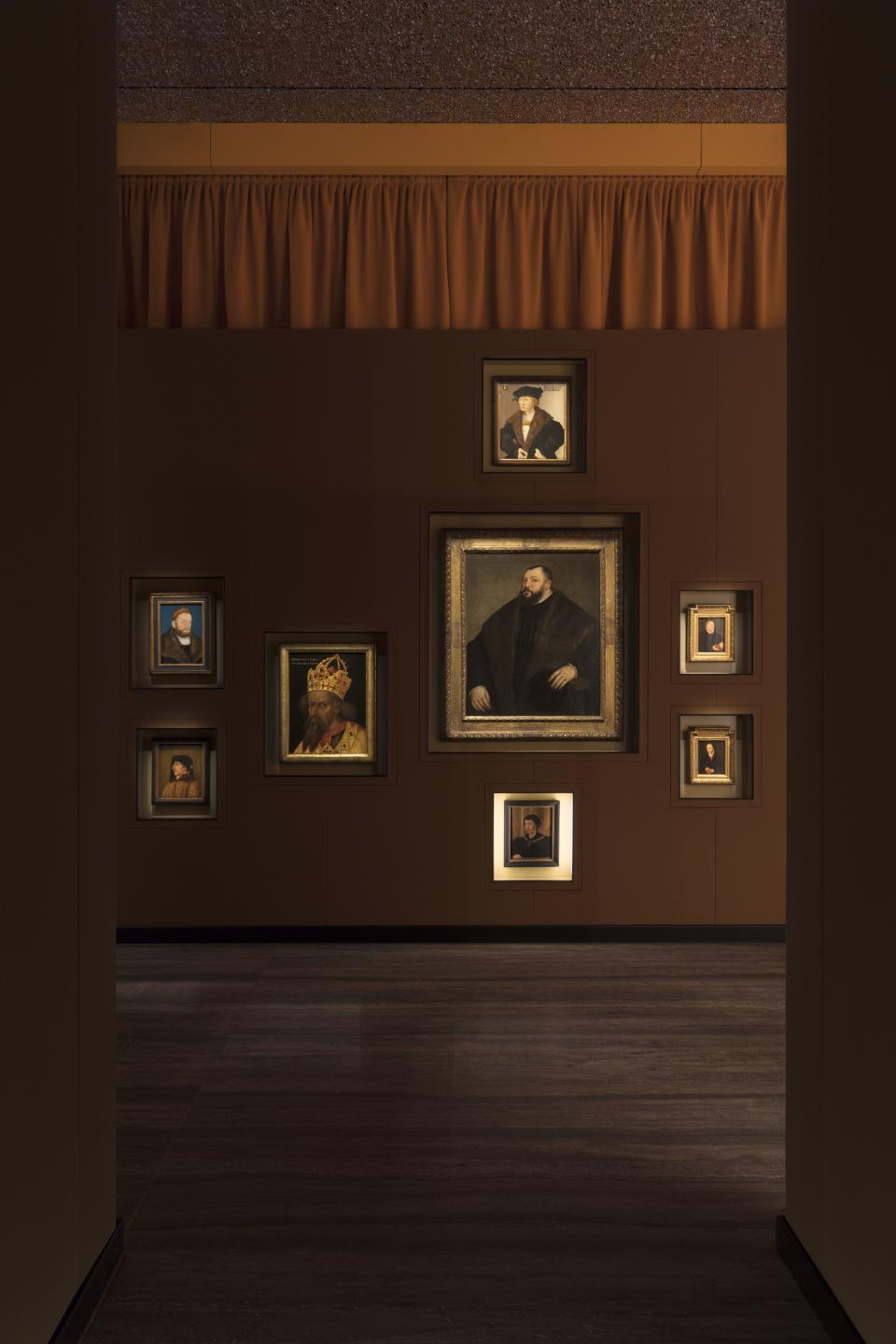
The list of objects, paintings, relics, and artifacts on show is fairly mind-blowing. The most ancient piece is a delicate bracelet with Egyptian faïence beads from 3,000 BC, together with a pallasite meteorite from Fukang, in the Xijiang region of China, which is 4.5 billion years old. The most recent acquisitions are three emu eggs, dark green, round, and smooth like avocados, laid expressly for the 2018 exhibition in the Naturihistorisches Museum. From a curatorial perspective, it was certainly one of the most bizarre artworks ever commissioned.
Masterpieces by Lucas Cranach the Elder, Titian, and Peter Paul Rubens sit alongside pieces of Roman marble statuary from the 1st century BC, or precious furnishings and objets like the Phoenix, an ivory sculpture made by the Master of the Furies in the 17th century. “But the exhibition isn’t intended as a selection of famous artworks,” explained Mainetti. It’s divided into small thematic rooms displaying groups of works and full of so many exquisite, quirky rarities, the Stendhal syndrome [a psychosomatic condition induced by exposure to beautiful objects] is just around the corner. In the Green Room for example, the pièce of résistance is Emerald on Gilded Copper Plinth, a small sculpture made of raw emeralds of various sizes mined in Colombia and assembled in Tyrol to simulate a gigantic, oversized emerald; of astounding quality and clearly priceless, it was made in 1596. It sits unexpectedly alongside a charming theater costume in lush eau de Nil silk shantung, worn by actress Erikha Pluhar in 1978 for a Henrik Ibsen play in Vienna. In another room, portraits of noble infants line the walls, depicting miniature princes and princesses, ready to embrace the future envisioned for them by the royal protocol, dressed as mini warriors, notables, and even monks. The less lucky of the lot are Madeleine Gonsalvus and her little brother, sons of the hirsute man Petrus Gonsalvus, painted in all their hairy elegance in 1580.
“The Spitzmaus Mummy and Other Treasures,” a Project by Wes Anderson and Juman Malouf, Opens at Fondazione Prada
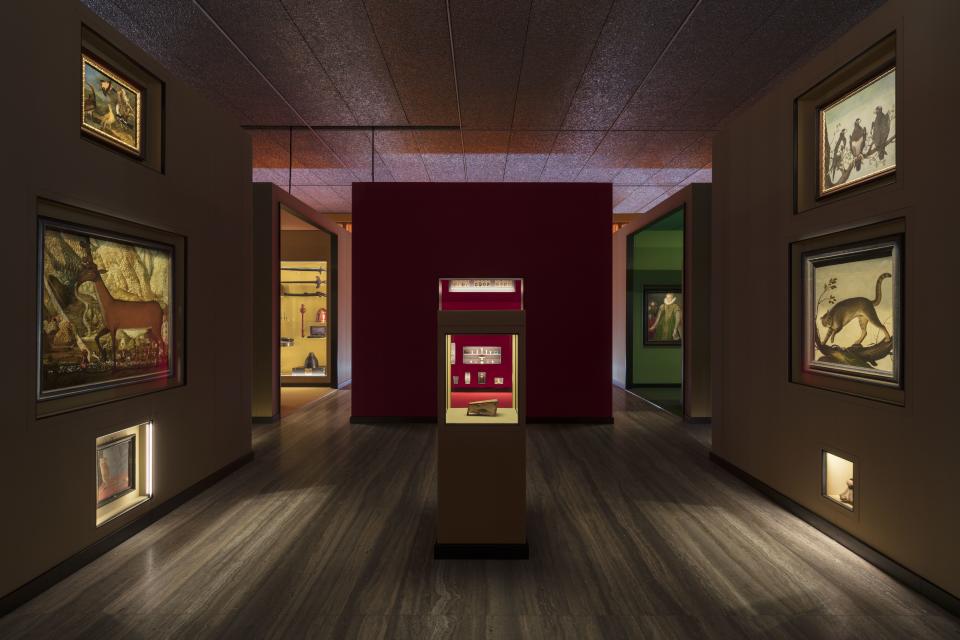
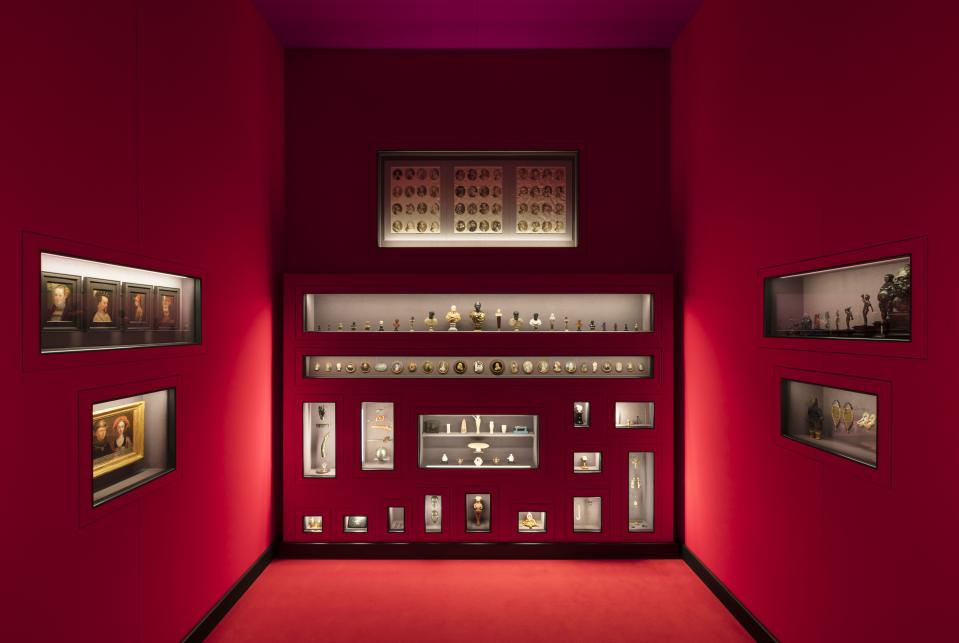


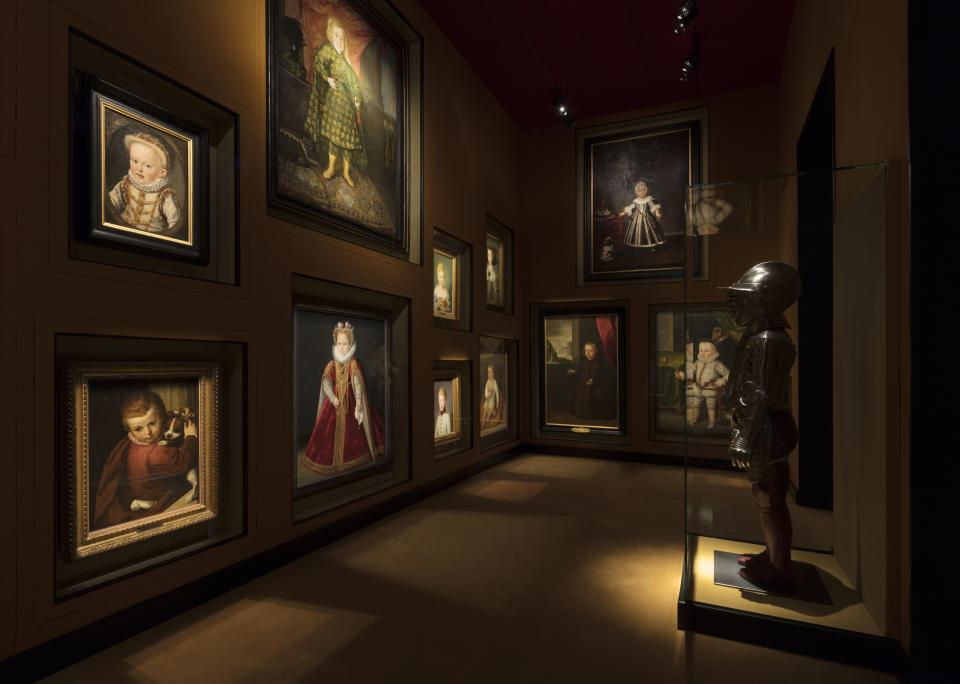
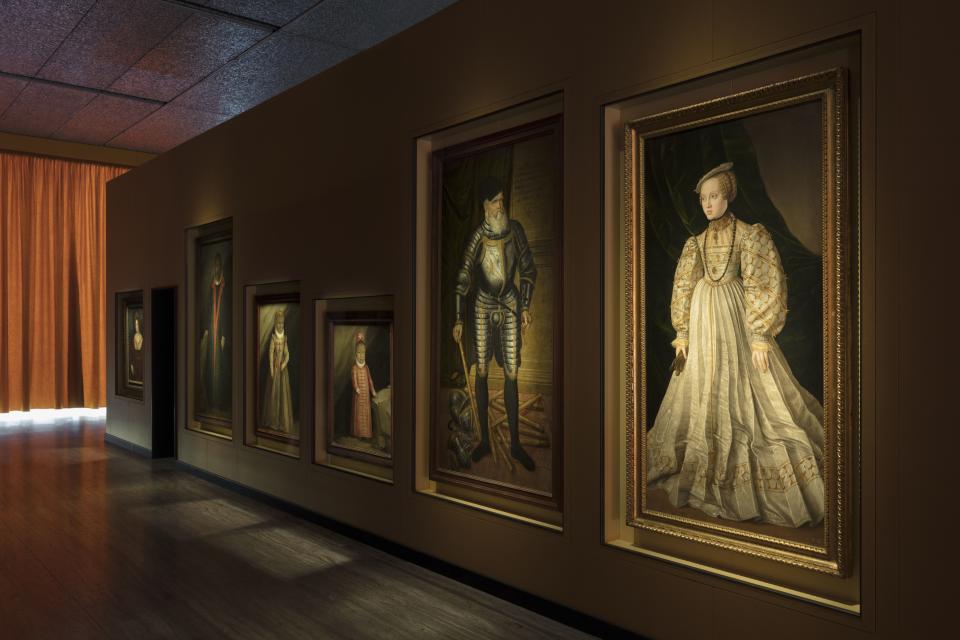
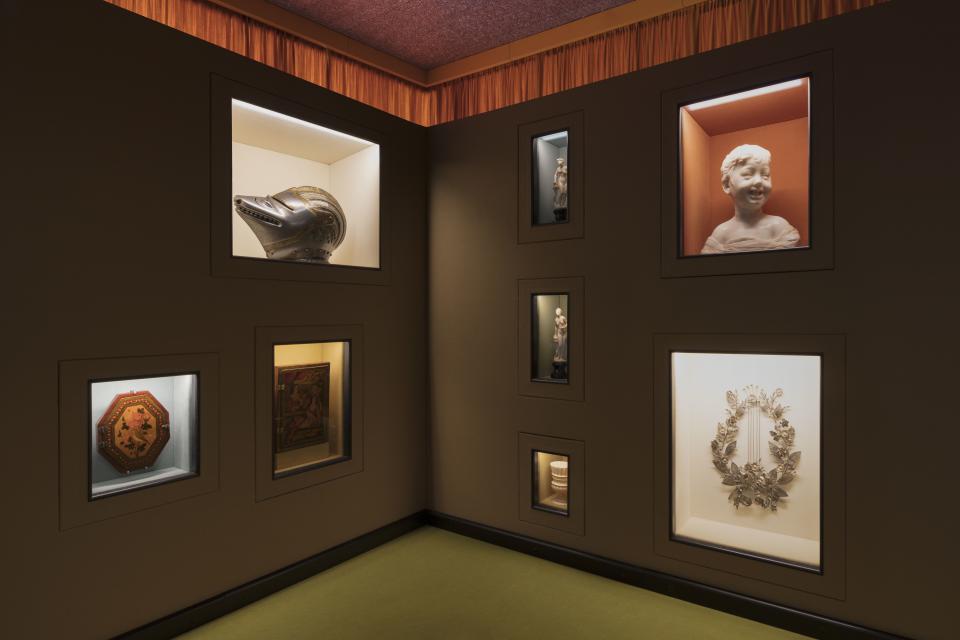
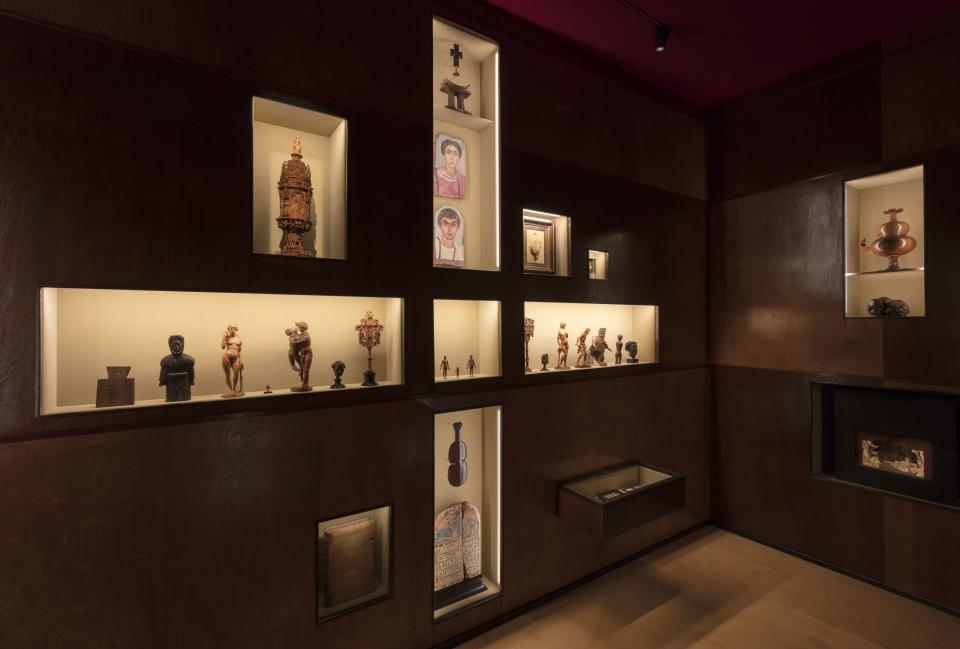
At the center of it all sits a small glass case where the star of the exhibition gets the attention it deserves: an ancient miniature wooden box, painted with faded hieroglyphics and the image of a rat. It’s the Spitzmaus coffin, which the exhibition is titled after, and it contains the embalmed remains of a shrew from the 4th century BC and made in Egypt in the late Ptolemaic Period. It actually looks like a chocolate box, but it’s anything but. It’s an unconventional choice which highlights the subtly surreal sensibility that Anderson and Malouf have brought to their curatorial practice, an approach well expressed in the following text, an excerpt from a conversation between Anderson, Malouf, the curator Jasper Sharp, and actor Jason Schwartzman.
Jason Schwartzman: Can we talk about this? This little mummy of a mouse or something. Because this is a very significant thing. This is one of the first things that when Wes was talking to me...
Juman Malouf: We actually saw this in the museum, and we both fell in love with it.
Wes Anderson: I have a particular feeling for this object and the mystery of it. I don’t actually think I wish to say much about it.
Juman Malouf: The one thing I would like to say is that we wanted to make a dessert out of it.
Wes Anderson: We thought Demel here in Vienna might make a small pastry in a cardboard coffin with maybe a meringue mummy with a raspberry filling. Which is the old guts. We did have a notion of them baking “Spitzmaus Mummies in their Coffins” and it might’ve been. I guess what we are hoping for was: a hit sweet.
Jason Schwartzman: Would you unwrap it? Would you unwrap the mummy? Or the paper would be eatable?
Wes Anderson: I think either one is a good option. We did it, at one point, think meringue might be used for the bones, and there would be a pastry to wrap that.
Jasper Sharp: If I recall correctly, I think the marketing department at Demel had a problem with the word “coffin “ in association with the dessert. I think that was the hurdle.
Wes Anderson: They didn’t think it was that funny.
The exhibition at Milan’s Fondazione Prada runs until January 13th, 2020.
Originally Appeared on Vogue

